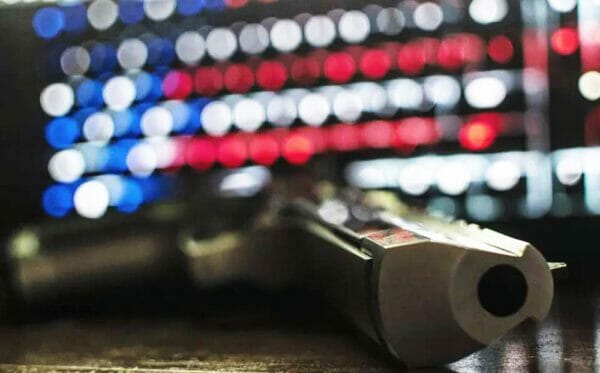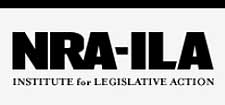
Ninety years ago, U.S. Supreme Court Justice Louis Brandeis described a novel business regulation in a case then before the Court as one that “involves a vast extension of the area of control” exercised by the state. In an often-cited reference, he urged the Court to uphold the scheme. “Denial of the right to experiment may be fraught with serious consequences to the nation. It is one of the happy incidents of the federal system that a single courageous state may, if its citizens choose, serve as a laboratory; and try novel social and economic experiments without risk to the rest of the country.”
The other members of the Court were unmoved by his enthusiasm, finding that the interest in exploring the “uncharted seas” of economic and social sciences could not transcend the limitations imposed by the Constitution. “The principle is imbedded in our constitutional system that there are certain essentials of liberty with which the State is not entitled to dispense in the interest of experiments.”
Although the issue before the Court didn’t involve firearms, arguably one such legislative experiment now is gun control, and the laboratory in this instance is the District of Columbia. A few weeks ago, a spokesperson for the national gun control group Giffords was clear that the formula couldn’t be more obvious. “There is no debate. Lawmakers can save lives, reduce violence, and make their states safer by following a simple blueprint: pass gun violence prevention laws.”
The same group praises Washington, D.C. for having “enacted some of the strongest gun violence prevention legislation in the nation.” Indeed, the checklist of gun laws adopted in the Nation’s capital stops just short of a complete ban on firearms, with gun owner registration, “universal” background checks, “assault weapon” and “large capacity” magazine bans, a prohibitive concealed carry law, a gun offender registry, and lots more of questionable validity given the U.S. Supreme Court’s decision in NYSRPA v. Bruen. The benefits of living in this exemplar of near-ideal gun control would, one expect, be boosted by proximity to adjacent Maryland (Giffords A-rated) and B-rated Virginia.
If only life were that simple.
The D.C. Police Union, representing the sworn officers of the Metropolitan Police Department (MPD), reports that as of June 6, the number of homicides in the District surpassed 100, being the earliest point in the year that the City had reached the triple-digit marker in two decades. The union’s statement provides additional context: over the last ten years, “the average date that we have reached this grim marker is October 25.” Homicides in some parts of D.C. are up by 133% this year compared to 2022, and are not the only violent crime on the upswing. Robberies citywide have increased by 34%, and carjackings have increased by 57%.
A Washington Post headline concurs: “D.C.-area carjackings have soared.” Carjacking has “grown at a staggering rate in the D.C. area during the height of the coronavirus pandemic and that continues to surge,” increasing from approximately 200 crimes in 2018 across D.C. and its neighboring jurisdictions to more than a 1,000 by the end of 2022. Not only is there a steady increase year over year, but juvenile perpetrators are overtaking adults in committing this crime.
The Washington Post article includes an awkwardly titled “carjacking tips from police.” The law enforcement hints on how to avoid being carjacked include trusting your instincts, parking in areas with good lighting and visibility, and keeping car doors locked, even when driving. “And, if you are threatened for your car, police recommend giving it up to avoid any personal injury.” Notably absent is advice on lawfully carrying a firearm for personal protection against would-be criminals.
The crooks themselves are uninhibited by the District’s strict gun laws – and with good reason. Data in a 2023 D.C. Sentencing Commission report reveals that out of a total of 5,558 MPD arrests for carrying a pistol without a license (CPWL) made between 2018 and 2022, 56.6% (3,146 cases) were “no papered” (“the prosecuting authority … elected not to immediately file charges in Superior Court related to the arrest”) or were closed without a conviction. Only 97 cases (1.74%) ultimately resulted in a prison sentence. The figures on arrests and dispositions for “unlawful possession of a firearm” (UPF) offenses show the odds in favor of lawbreakers were pretty good, too. Out of 2,149 total arrests made for UPF crimes in the same time period, the majority (62.6%, or 1,346 cases) were “no papered” or closed without a conviction. Of the remaining cases that resulted in a conviction and sentencing for UPF, only 14.5% (312 cases) concluded with the offender behind bars.
Our earlier alert on the impact of gun control in Vermont (“Is gun control making Vermont less safe?”) cautioned that it’s an oversimplification to conclude that fluctuations in the violent crime rates rest on the relative strength of a jurisdiction’s gun control laws. The case with the District of Columbia is no different. Common sense suggests, though, that D.C.’s gun laws are doing little to impede crime, being more honored in the breach than in the observance.
Undoubtedly, gun control advocates will find a way to explain why following their “simple blueprint” in D.C. hasn’t led to reduced crime or increased public safety – Giffords, for one, makes a point of stating (about a jurisdiction with no gun stores and just two licensed FFLs) that “firearms purchased in DC are rarely used in crimes.”
Going back to that 1932 Supreme Court case, the Court laid down a different and preferable scientific method for legislators to follow. “[U]nreasonable or arbitrary interference or restrictions cannot be saved…merely by calling them experimental. It is not necessary to challenge the authority of the states to indulge in experimental legislation, but it would be strange and unwarranted doctrine to hold that they may do so by enactments which transcend the limitations imposed upon them by the Federal Constitution.”
About NRA-ILA:
Established in 1975, the Institute for Legislative Action (ILA) is the “lobbying” arm of the National Rifle Association of America. ILA is responsible for preserving the right of all law-abiding individuals in the legislative, political, and legal arenas, to purchase, possess, and use firearms for legitimate purposes as guaranteed by the Second Amendment to the U.S. Constitution. Visit: www.nra.org

